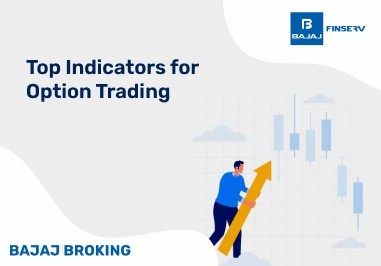NIFTY 50 is a key indicator to learn about India's top 50 companies in different sectors. This stock indicator tells a lot about the overall market, leading companies, and customer sentiment.
Calculated using a free-float formula of market capitalisation, the NIFTY 50 calculation guides investors on market performance, stability, and several other parameters, helping them make investing decisions.
What is NIFTY 50?
Before we go ahead with how Nifty 50 is calculated, let's first understand what is NIFTY 50. In most simple terms, NIFTY 50 can be understood as one of the top share market indexes of India. But what does this index reveal? Well, the index reveals India's leading 50 and top-performing traded companies across various sectors. Thus, NIFTY 50 serves as a gauging meter to understand the major players in the share market, their performance, and much more.
But how does NIFTY 50 help? Well, as an index that reveals India's top-performing companies, it tells a lot about the market too. Traders and investors use this tool to gauge market trends and overall wellness. It also speaks a lot about the country's economic health.
In short, the valuable information provided by NIFTY 50 calculation about leading companies and market trends can come in handy while making investment strategies and decisions. You may also use the same to enhance your returns on investment.
Key Factors That Affect NIFTY 50 Calculation
The NIFTY 50 calculation is affected by several factors like the market capitalisation index, free-float methodology, and more. Let's understand them in detail.
The market capitalization-based index is a bit different than the normal average. Here, each share does not have the same weight. Instead, in a market capitalization-based index, each stock is weighted based on its market capitalisation. Meaning, companies with lesser market cap have a lesser impact on the index value. Alternatively, companies with higher market capitalization value enjoy greater impact.
Free-float market capitalization is the total of outstanding shares or capital stock of a company. Also, this only takes into consideration the stocks that are ready to be publicly traded. This eliminates shares like locked-in shares, thus giving a more precise representation of the market's true value.
For a company to be a part of NIFTY 50, it must be registered with the National Stock Exchange of India or NSE. Further, it shall also have an Indian domicile. Another important criterion revolves around its trading frequency, which shall be no less than 100% over the last 6 months. Additionally, other criteria like it's liquidity, sectoral representation, and market capitalization are also taken into consideration.
Step-by-Step Guide on How NIFTY 50 is Calculated
Now that we know what NIFTY 50 is, what it reveals, and how significant it is for the market and investors, let's move ahead. One of the significant questions around NIFTY 50 is the NIFTY 50 calculation. Investors often seem to be curious to know how NIFTY 50 is calculated. Well, let's see.
The NIFTY 50 calculation starts with selecting companies based on a set of criteria. Here, the company's liquidity, market capitalization, and all are considered. Now, to determine the market capitalization of the company, each share is weighted differently based on its market cap, thus, having a different influence on the index.
Once the companies are sorted based on market capitalization, the next step to derive the NIFTY 50 calculation is using a free-float market capitalization method. This is the total sum of outstanding shares of a company. It is calculated by multiplying the respective weight and free-float market capitalisation value of each company.
Once the weight for each of the 50 companies is calculated, the NIFTY 50 calculation is completed by adding the products of each company's respective weight and free float market cap value. This whole calculation gives valuable insights into the collective functioning of the market.
Additional Read: What is Demat Account: Importance, Features and Types
Real-Life Example of NIFTY 50 Calculation
Now that you theoretically know how NIFTY 50 is calculated, let's understand the same with an example for better clarity.
Say, there are two companies, company A and company B. The free-float market cap of company A and company B is ₹10,000 and ₹ 5000 respectively. The total free float value of all companies of ₹50,000.
Now, the weight of company A in the index can be calculated as:
Company A: (Its free float market cap÷ total free float market cap)×100
=(₹10,000 crore ÷ ₹50,000 crore) × 100
= 20%
Similarly, the weight for company B can be calculated as:
Company B: (Its free float market cap÷ total free float market cap)×100
=(₹5,000 crore ÷ ₹50,000 crore) × 100
= 10%
Once we have calculated the weight of each company, we can calculate NIFTY 50 by having a sum total of the product of free-float market capitalization and its respective weight.
Why NIFTY 50 Calculation Matters for Investors
The importance of NIFTY 50 isn't just about getting a list of the top 50 companies. It's much more than that. It can be a gauging and an educational tool for investors in several ways. The index is nothing short of a report on the market's overall health and performance. You may use the same to check if your investments are in line with overall market sentiment to improve your portfolio performance. As mentioned, NIFTY 50 also speaks a lot about the market sentiment. You can read the market mood, see what sectors are going strong and weak, and invest accordingly based on sectoral behaviour. Overall, the index can come in quite handy to refine your investment plan and strategy.
Additional Read: Differences Between Nifty and Sensex
Conclusion
The NIFTY 50 index is a great guiding tool calculated using a mix of free-float market capitalization and respective weighted approach. It tells a lot about the financial situation of the top companies and the economic landscape of the country. Once you understand how NIFTY 50 is calculated, you get familiar with important economic trends, market mood, consumer sentiment, and several important concepts. Each of these can guide you immensely in making wise and informed investment decisions.
Disclaimer: Investments in the securities market are subject to market risk, read all related documents carefully before investing.
This content is for educational purposes only. Securities quoted are exemplary and not recommendatory.
For All Disclaimers Click Here: https://bit.ly/3Tcsfuc














